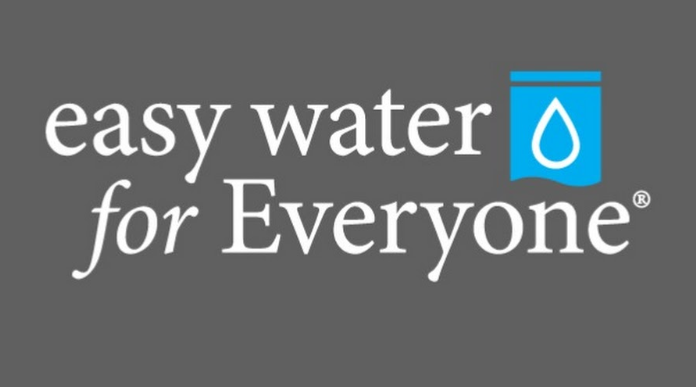Crystal Clear: Simple Solutions for Safe Water at Home
: Discover practical tips, easy solutions, and the latest tech for safeguarding your water supply. It is ideal for homeowners seeking peace of mind about water quality.

Water is the elixir of life, the nectar of the gods, and the most elemental building block of our existence. It’s the first thing we reach for in the morning and the first thing we know to find on other celestial bodies if we ever look for life. But what if that water isn’t as safe or as clear as the thirst-quenching promise we always hope to be?
In this comprehensive guide, we’ll walk you through the steps you need to take to ensure the water running through your home’s pipes is safe to drink, giving your body the quality it deserves and the safety it demands.
Contents
Water Filtration Methods
There are many methods available for filtering water, each with pros and cons. Let’s examine the most common ways to keep your water free of contaminants.
Pitcher Filters
Arguably the most accessible and easy-to-use filtration method, pitcher filters are a staple in many homes. They work by simply pouring tap water into a pitcher, where it passes through a filter that traps particles and other impurities.
These filters can remove many common contaminants in tap water, making it taste better and safer to drink. However, their effectiveness depends on the filter’s capability and the frequency of replacements, a crucial, often overlooked maintenance aspect.
Faucet Filters
Faucet filters are slightly more permanent fixtures compared to pitcher filters. They attach directly to the faucet, usually with a simple screw-on mechanism, and provide filtered water on demand.
The advantage of faucet filters is their convenience and cost-effectiveness. They last longer than typical pitcher filters and are known to remove a broader range of contaminants, making them a favourite for households looking for a balance of ease and efficacy.
Under-Sink Filters
For those who prefer a cleaner look in the kitchen, under-sink filters deliver extensive purification within the depths of your cabinetry. These systems need more installation effort but offer a more comprehensive filtering process for larger quantities of water.
Under-sink filters often have several stages of filtration, including sediment filters, activated carbon blocks, and sometimes even reverse osmosis for maximum purity. While more expensive up front, they provide high quality and quantity regarding water filtration.
Whole-House Filtration Systems
The ultimate water-filtering set-up is the whole-house filtration system. These are installed at the point where the municipal water supply enters your home, ensuring that all the water you use, whether for drinking or bathing, is purified.
This type of system usually includes multiple filters and often requires professional installation. While it’s quite an investment, it offers unparalleled peace of mind and long-term protection against waterborne impurities.
No matter which filtration system you choose, regular maintenance and water filter replacement are vital to ensure the effectiveness of your system. Over time, filters can become clogged with contaminants, reducing their efficiency and eventually rendering them ineffective.
DIY Water Testing
You don’t need to be a scientist to test your water, and you don’t even need to leave your home. Here are the simplest and most affordable ways to check what’s in your water.
Test Strips
Water test strips are one of the quickest and cheapest methods of testing water quality. You dip the strip into a water sample for a few seconds and then compare the colour changes to a chart to determine the levels of various chemicals and impurities.
While they’re less precise than other methods, they can give you a general idea of your water’s safety. They may be sufficient for detecting unusual levels of contaminants like chlorine or pH.
DIY Kits
DIY water testing kits typically involve collecting a water sample and then adding reagents provided in the kit. Like test strips, you’ll observe colour changes and match them to a guide to measure contamination levels.
These homemade tests are involved but often produce more accurate results. They’re a step up from test strips and can cover many potential issues, including bacteria and lead contamination.
Professional Testing Services
If you have serious health concerns or environmental issues that could be related to water quality, it’s best to leave the testing to the experts. Many professional labs offer comprehensive water testing services that can detect a range of contaminants at exact levels.
This option is the most expensive but is invaluable when dealing with high-stakes situations. It’s also a wise choice if you’re looking for the most reliable data, especially considering a more permanent move away from tap water.
Benefits of Safe Water
The benefits of safe water at home are myriad, touching on every aspect of your life, from your health to the world around you. Understanding these advantages can be a powerful motivator for taking action to ensure your water’s purity.
Health Impacts of Clean Water
Clean water is essential for maintaining good health. It’s crucial for hydration, body temperature regulation, and digestion. When water is contaminated, it can lead to a host of health problems, from gastrointestinal issues to more severe conditions caused by exposure to lead, arsenic, or other toxins.
A reliable water filtration system can significantly reduce the risk of exposure to these harmful substances, ensuring that the water you and your loved ones consume is free from dangerous impurities.
Environmental Benefits
Choosing to filter your water at home can also positively impact the environment. Reducing the number of plastic water bottles you purchase and dispose of can reduce waste and help protect our oceans and landfills.
Furthermore, using water more mindfully with filtration systems can decrease overall water consumption, an important consideration in areas prone to drought or struggling with water scarcity.
Conclusion
Now that you know more about the different types of water filtration systems and their benefits, it’s time to take action. Whether you opt for a pitcher filter or invest in a whole-house system, ensuring the safety and purity of your water is crucial for your health and the environment.
Regular maintenance and testing are vital to ensuring these systems continue to function effectively. So, make sure to stay on top of filter replacements and take advantage of DIY testing methods or professional services when needed. By taking these steps, you can have peace of mind knowing that your water is safe and healthy for you and your family to use.



